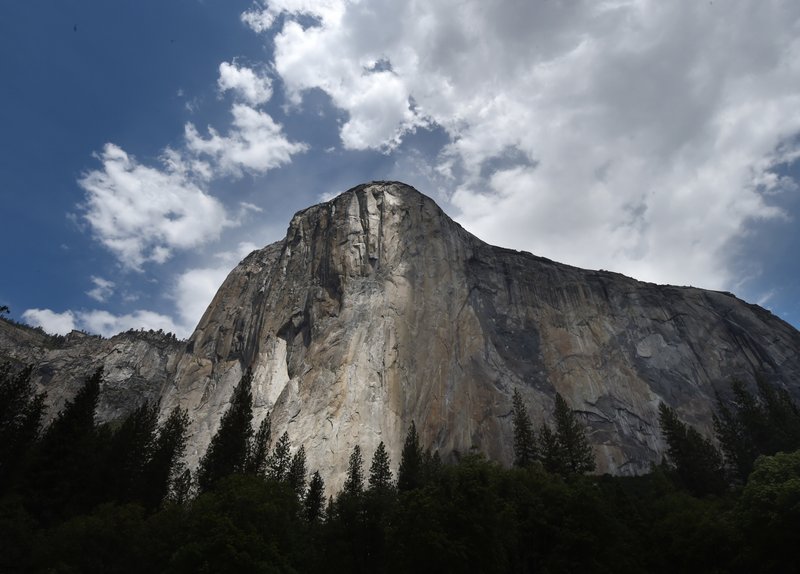A thin ephemeral waterfall in Yosemite National Park that's barely noticed by many visitors to the popular Yosemite Valley becomes the California park's star attraction each February.
Horsetail Fall over the eastern edge of El Capitan can glow golden or orange at sunset from mid- to late-February when its water is flowing and skies are clear.
Illumination from the setting sun causes this phenomenon, what's become known as the firefall.
For older visitors, it can be reminiscent of another grand nightly spectacle of the same name that ended in 1968: The pushing of burning coals over Glacier Point into Yosemite Valley below.
"Horsetail Fall is an amazing natural phenomenon if you see it under the right circumstances: when there's enough water, when the light's right," photographer Michael Frye said in an episode of Yosemite Nature Notes. "This thin ribbon of water just glowing neon orange with the cliff in the shade behind it so it just seems like it has its own sort of light, that there's nothing else creating it."
Yosemite officials warned that "even some haze or minor cloudiness can greatly diminish or eliminate the effect."
Fingers crossed for favorable February conditions!
WHERE TO PARK AND SEE THE FIREFALL
Hundreds of people have descended on Yosemite Valley daily during firefall season in recent years in hopes of catching a glimpse of the 1,000-foot glowing waterfall. Visitors should plan time for parking and walking to a viewing location — and expect it to be crowded with visitors and cameras.
A popular spot to see Horsetail Fall is around the El Capitan Picnic Area Picnic Area, between the Camp 4 campground and El Capitan along Northside Drive.
One of Northside Drive's two lanes is closed to vehicles in that area when the firefall phenomenon occurs so visitors can use it to walk from parking lots around Yosemite Falls and Yosemite Valley Lodge toward Horsetail Fall. No parking permits are required.
It's about two miles from the lodge to El Capitan Picnic Area. Vehicles with a disability placard can park at the picnic area.
Visitors can also walk east from El Capitan Meadow.
"With the recent tree clearing, there are many open areas with great views for the public to see Horsetail Fall," Yosemite spokeswoman Jamie Richards said.
Visitors should be prepared to walk at least a mile from their parking spot to a viewing area.
It's prohibited to park or stop a vehicle along Northside Drive between Camp 4 and El Capitan during this time, and on a short crossover segment that connects Northside and Southside Drive in the western end of Yosemite Valley.
Parking or stopping is also prohibited along Southside Drive between El Capitan Crossover and Swinging Bridge Picnic Area. Pedestrians will also not be allowed along this section of Southside Drive, the Park Service said.
Yosemite National Park is in the Sierra Nevada region of California and the nearest airports are Merced Airport and Fresno-Yosemite International Airport. Seven-day passes to enter the park are $35 per non-commercial vehicle up to 15 passengers, $30 for motorcycles or $20 if entering by foot, bicycle or horse. Annual passes are $70. For more information visit nps.gov/yose/index.htm.
Travel on 01/26/2020

